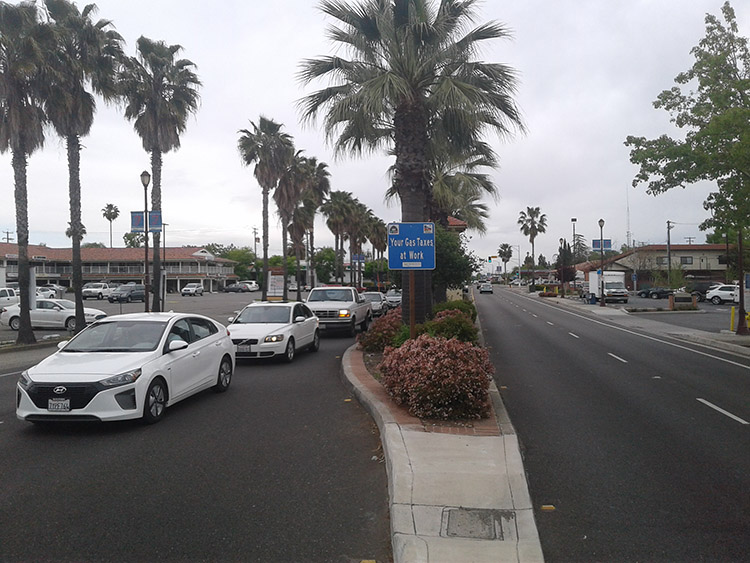CEQA Transportation Analysis (VMT)
On October 6, 2020, the Board of Supervisors adopted revised significance thresholds for CEQA transportation analysis using vehicle miles traveled (VMT), in compliance with SB 743. In conjunction with the Office of Planning and Environmental Review, the Department of Transportation has updated the Transportation Analysis Guidelines (TAG) to provide guidance on VMT analysis. The TAG outlines screening criteria, by which projects may be exempted from VMT analysis. If screening criteria are not met, a proponent must analyze the project’s VMT, using methodologies outlined in the TAG. If a project is found to have a significant impact, VMT-reducing mitigation will be required.
Local Transportation Analysis (LTA)
The Department of Transportation continues to require traffic studies, now called Local Transportation Analysis (LTA), for certain projects. Generally, this includes projects generating 100 or more new a.m. or p.m. peak hour vehicle trip-ends, projects generating 1,000 or more daily vehicle trip-ends, or projects which are likely to cause or substantially contribute to traffic congestion or safety issues. The purpose of the LTA is to ensure compliance with the multimodal policies in General Plan, including level of service (LOS), safety, transit service, and a comprehensive, safe, convenient, and accessible bicycle and pedestrian system. The project will be conditioned to provide any improvements recommended in the LTA in order to comply with General Plan policies. Depending on the project, the Department of Transportation may require additional analysis, including, but not limited to: turn pocket queuing, drive-thru queuing, traffic signal warrants, traffic safety, neighborhood cut-through traffic, truck impacts, access control, and phasing analysis. Requirements and guidance for preparing an LTA are included in the TAG.
Focused Access and Circulation Study (FACS)
Projects not meeting the threshold for an LTA may be required to provide a focused access and circulation study (FACS). The purpose of a FACS is not to assess the potential for off-site impacts, but to evaluate issues related to project access and internal circulation (e.g. number and location of driveways, need for traffic signals or turn pockets).

Process
Should an applicant elect to have a Pre-Application Meeting (PAM), a representative of the Department of Transportation will attend to provide a trip generation estimate, an initial assessment of whether or not the project is likely to require VMT analysis, and/or LTA/FACS, and a draft scope, if so. Please note that the final determination requiring VMT analysis and LTA/FACS and scope will be made after the application is received. For projects that have not elected to have a PAM, the Department of Transportation will evaluate the project upon initial distribution of the application. At that time, a memorandum will be prepared, estimating the project’s trip generation and outlining requirements and scope (if applicable) for VMT analysis and/or LTA/FACS.
The applicant would then take the scope and hire a consultant, subject to approval of the Department of Transportation, to prepare the VMT analysis and/or LTA/FACS. Please note that the Department of Transportation charges a review fee to cover staff time. The applicant may request that Department of Transportation staff prepare the VMT analysis and/or LTA/FACS in-house. Such requests will be considered by Department of Transportation based on staff availability, and contingent upon payment of applicable fees to cover staff time.
Contact Information
Gary Gasperi, Sr Civil Engineer
(916) 876-4108
gasperig@saccounty.gov
